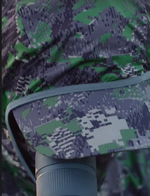Having been wearing Sitka in some form since somewhere around 2014, I’ve gotten used to their marketing, advertisements, sales tactics, more recent “influencing”, etc. I can’t help but notice something is very different this year.
The first thing that I noticed was the huge abnormal sales like most folks were pointing out, I chalked that up to overstocking and a win for folks to get cheap high quality Sitka gear.
Second was their summer product releases. There has been almost ZERO marketing for anything they’ve released. They appear to have new shooter gloves, a new bino harness, and more notably brand new very expensive down gear tops and bottoms. I have yet to see a single email, IG post, influencer, etc promoting these pieces. Very very strange.
I’ve also heard from folks in the industry that they’ve had some serious changes in staff, with only one or two folks left from the recent years. I’m guessing one of those is barklow cuz I still see him here and there discussing Sitka.
And lastly, I just saw today John Dudley saying he’s leaving Sitka (and PSE) and will be getting new sponsors. He more or less discussed the staffing issue above and also change in senior leadership.
Maybe I have a tin foil hat on, but something seems off. Is Sitka changing? Are they going out of business? Is it still the Sitka we have all always known and loved?
Let’s see what folks know, think or hear. I’m super curious, because as a long time Sitka fan, I hope they aren’t going anywhere or changing too drastically.
Sent from my iPhone using Tapatalk
This is a great question - you're absolutely right. Sitka is changing.
11-12 months back Sitka made internal changes across their organization. And, moved folks from Gore (parent company) into the Sitka org. to oversee Merchandising (all product, new releases, product roadmap, etc). Merchandising is the function we see as end users - it's what shows up online, in-store and on-sale.
There were key moves / hires across Merchandising, Retail and Demand Planning (demand planning is the role that is responsible for the financial investments across inventory and product lines)
All three roles that Sitka hired came from companies like Academy Sports & Outdoor, lululemon, Fjallraven & Gore (internal appointment). I'm not going to name names - but, these folks do not live in Bozeman, and do not understand the Hunting industry or us the end users. John Barklow is the only true end user in a Senior Leadership role at Sitka now.
Sitka also made key moves to deleverage their Wholesale channel (products that show up at SCHEELs, or on GoHunt.com, etc.). And, under this new leadership lowered the percent to total investment in true end user products (Ambient, Intercept, Mountain & Evo et al.) to grow lifestyle.
Said more simply - Sitka is pivoting to a true Direct-to-Consumer ecommerce brand. Margins are higher, lifestyle sells more quickly, and they can invest less in inventory because we are all blind to how many units Sitka has in-stock on their website vs. shopping in real life.
ALL of this is an attempt to be more profitable. Make more money.
The fire-sales Sitka has had over the last year were an attempt to clean out their gluts of inventory (stuff they owned way too much of), and free up cash to invest in new products across Lifestyle and in many cases get rid of styles - notice how ALL baselayers are now Merino, and certain (awesome) products no longer exist (Kelvin Down).
This doesn't necessarily mean quality will go down - though I bet more products we've perhaps loved will no longer exist. Lifestyle will be more prominent and truly technical hunting apparel will be a fraction of what it was in the past.
IMO the lifestyle stuff looks like trash (the new flannels and pants are awful). And, since Sitka got rid of the OG Ambient and Kelvin Down, I'm at a loss for what I would buy from Sitka to actually hunt. Maybe the Snowcrest 1/4 to wear to a BBQ or take my dog on a walk?
My only hope: Sitka's new leadership and bean-counters listen to John Barklow, and let him do what he's best at.
I've worked on the corporate-side of the retail industry for 15 years, seen this happen across a lot of brands. And, I've spoken to a few buyers and sales associates on the front lines of Sitka's changes.
 either way I’m good with what I have and just wish they would come out with normal solid colors but I’m sure the real hardcore fanboys will go out and buy it all
either way I’m good with what I have and just wish they would come out with normal solid colors but I’m sure the real hardcore fanboys will go out and buy it all 

